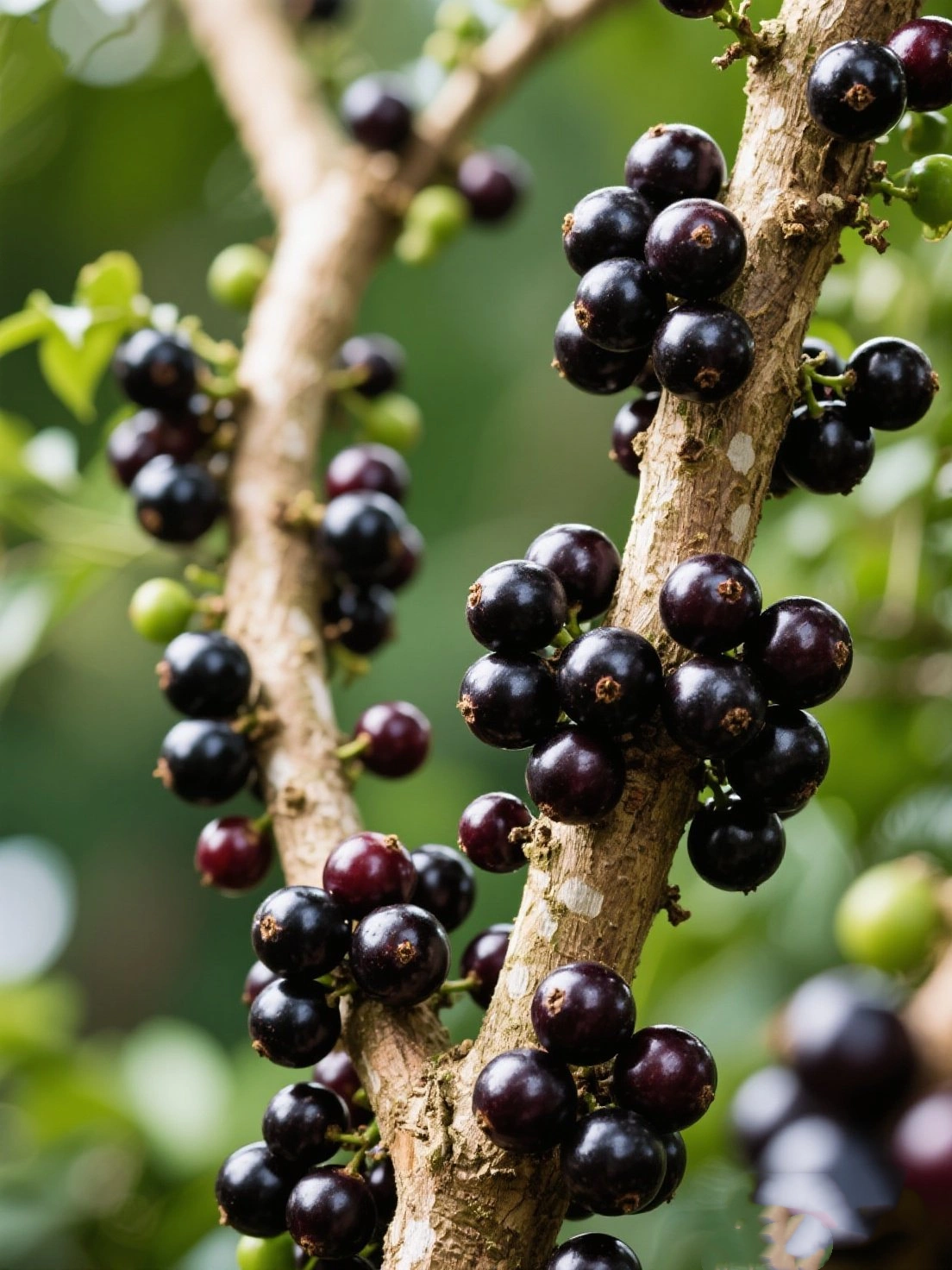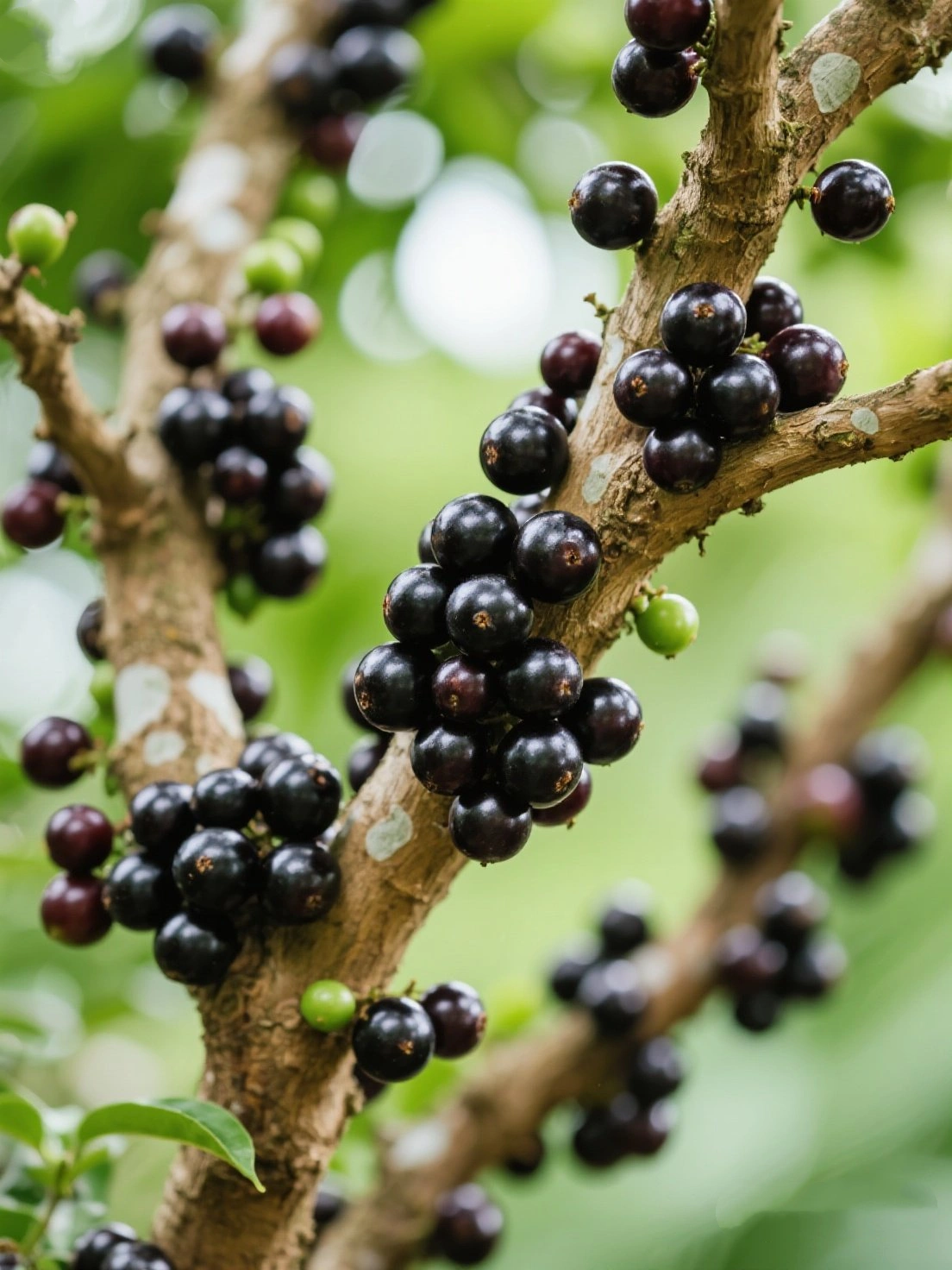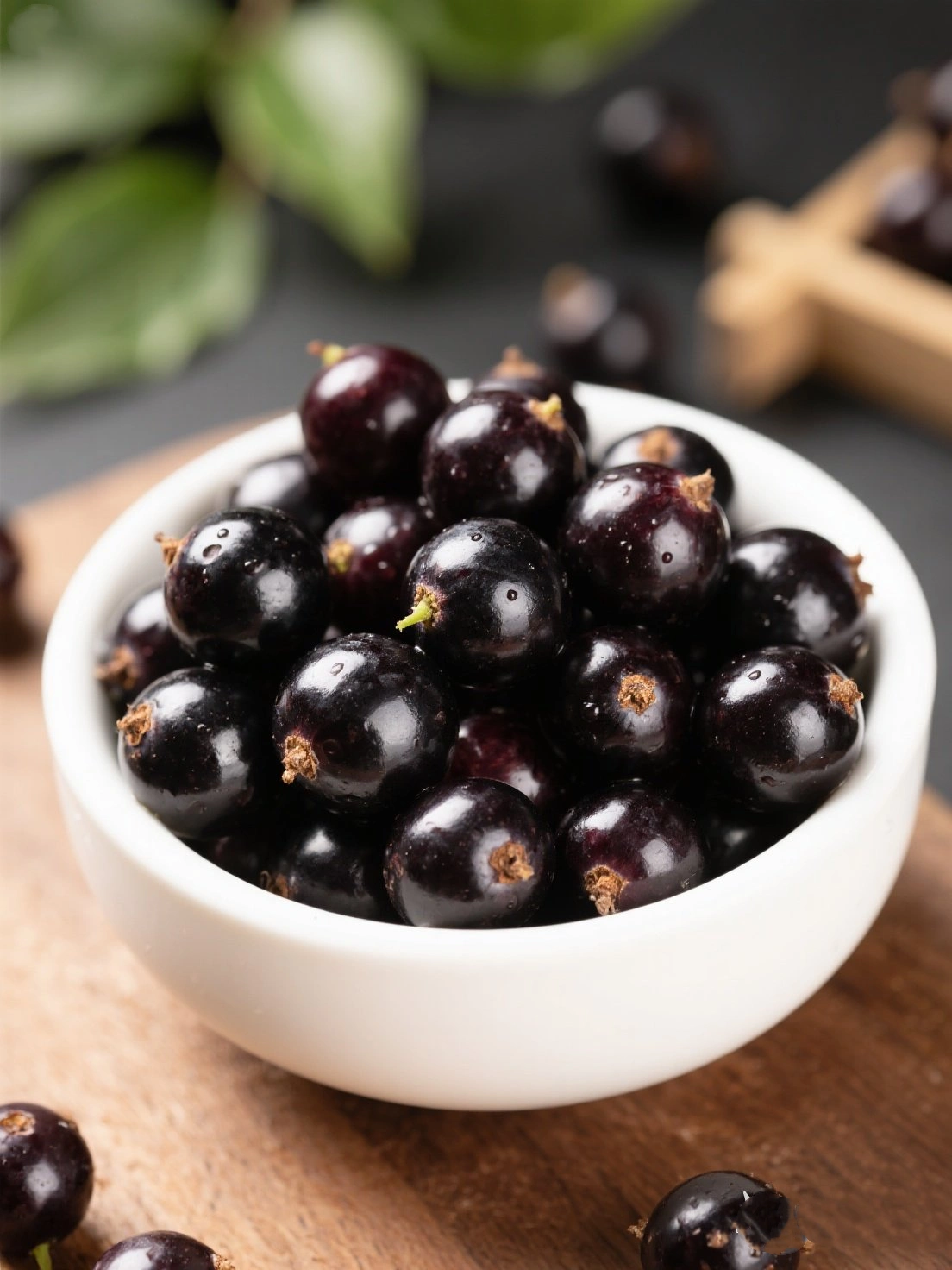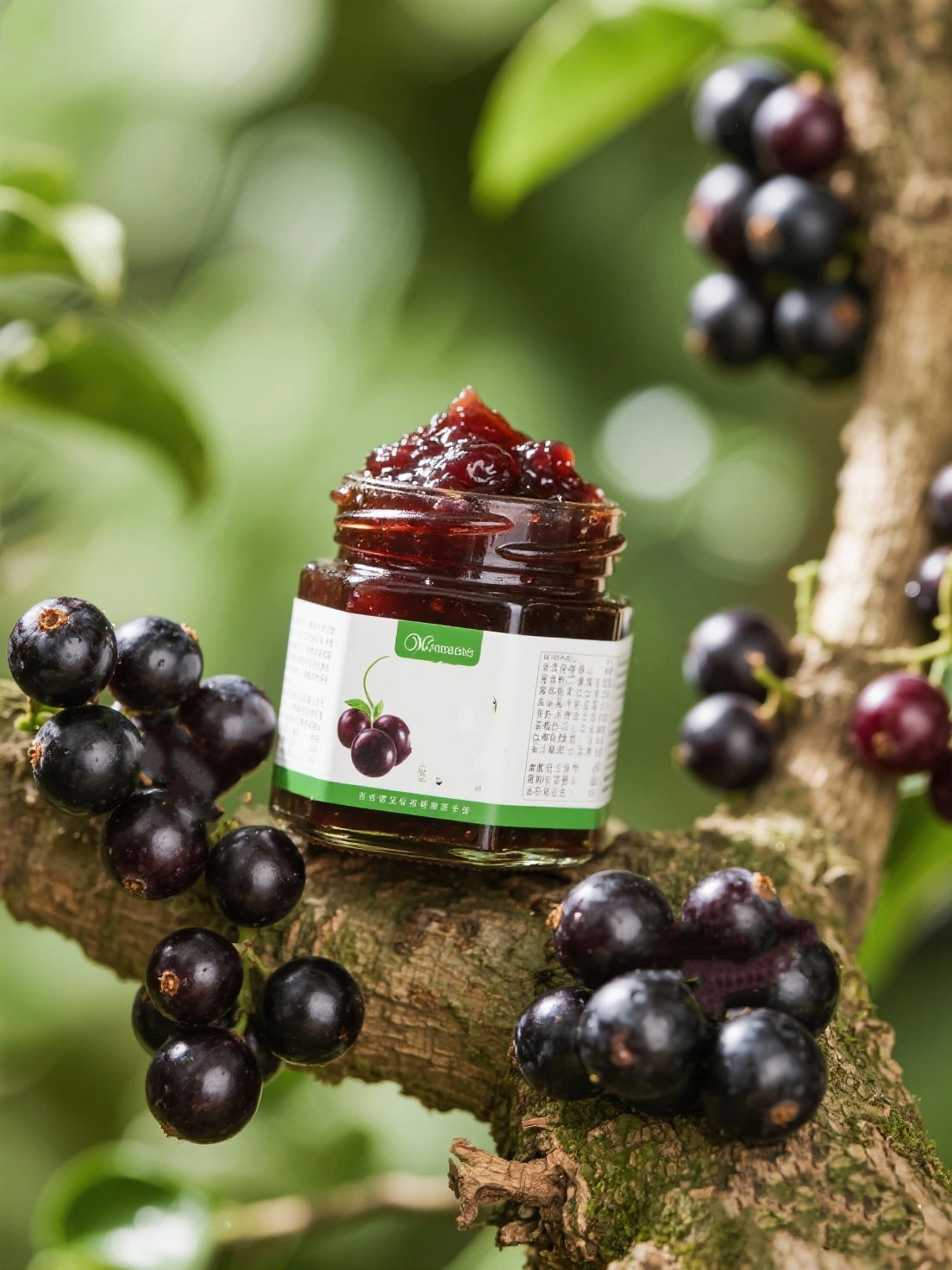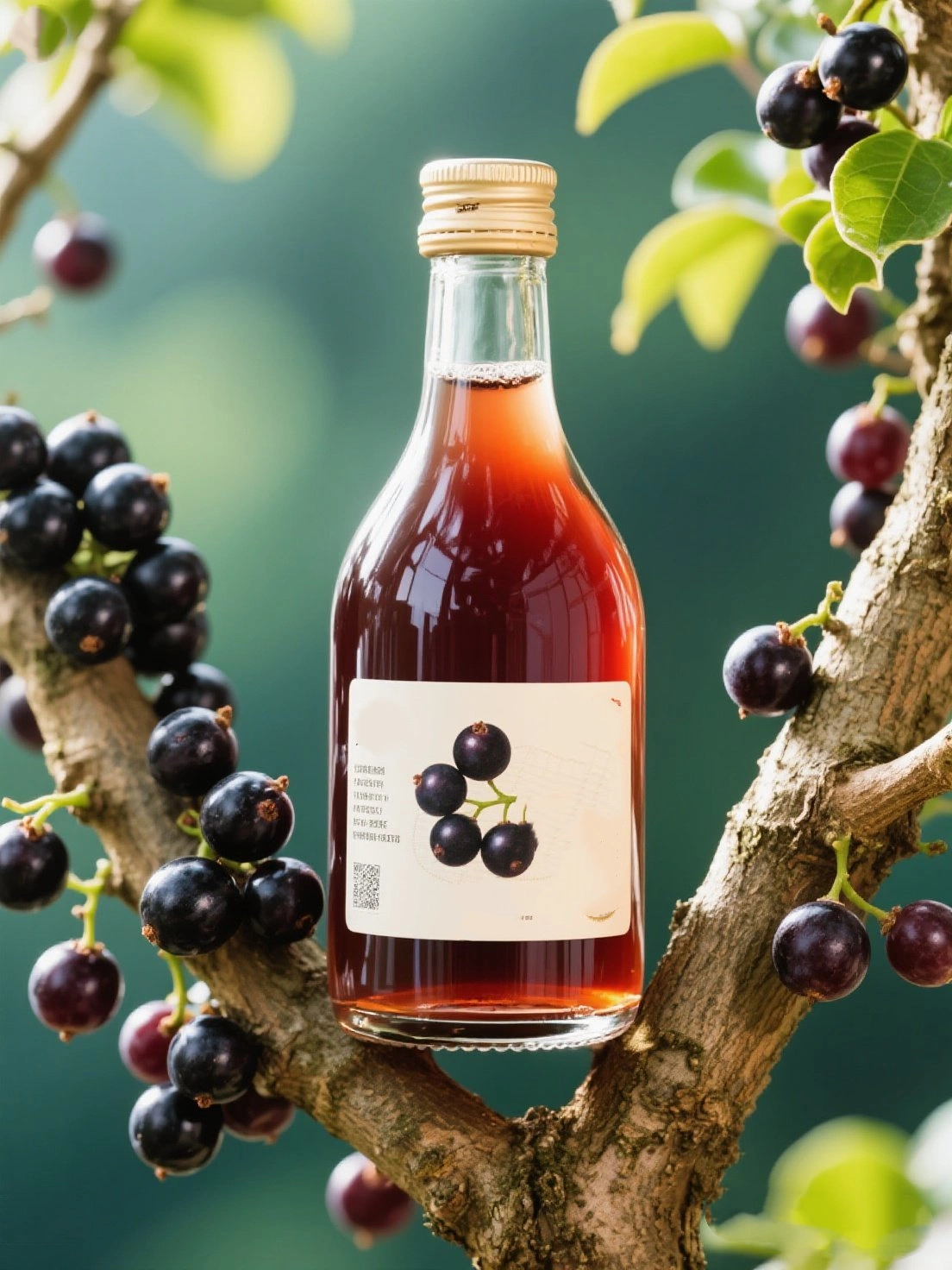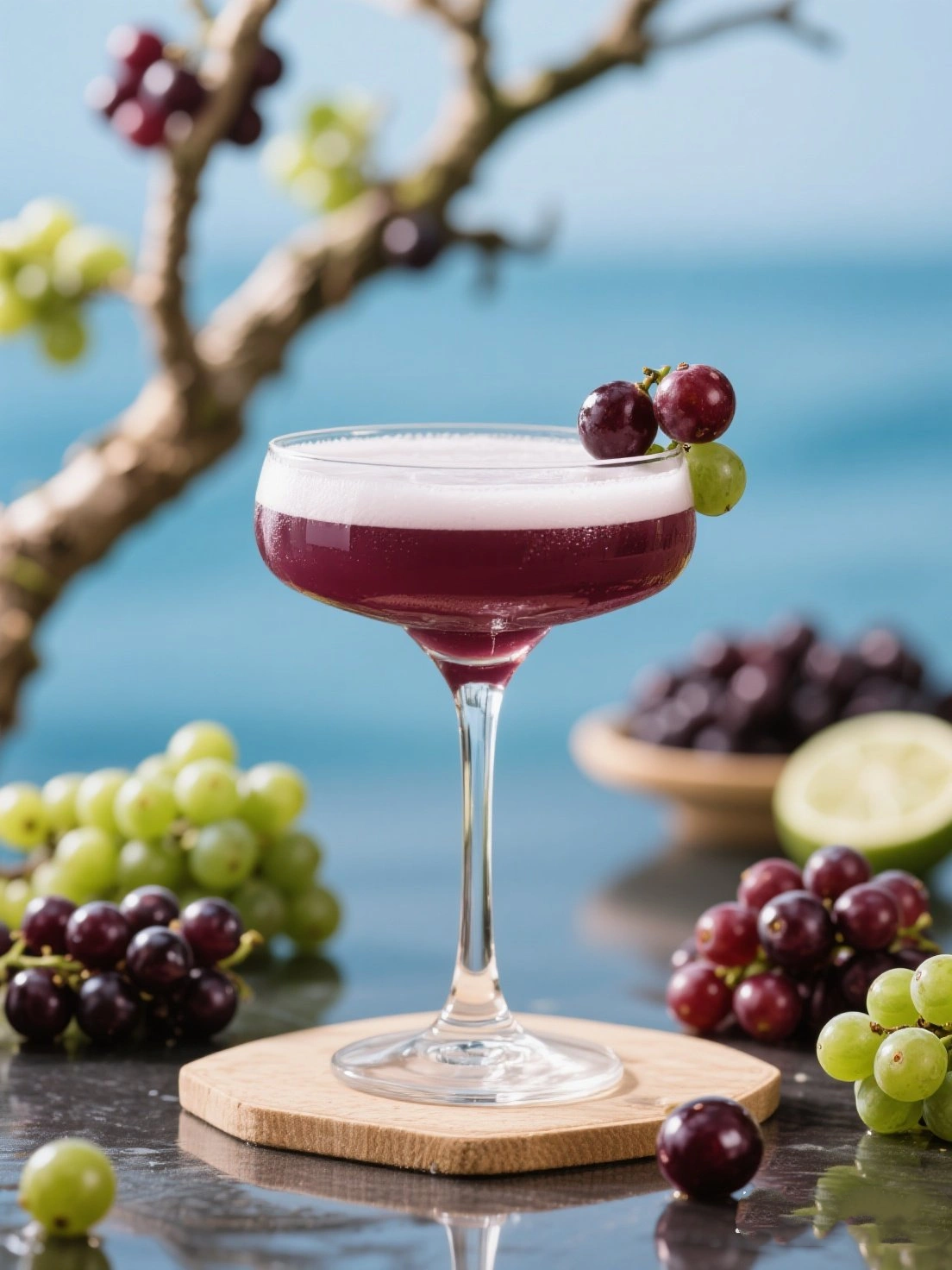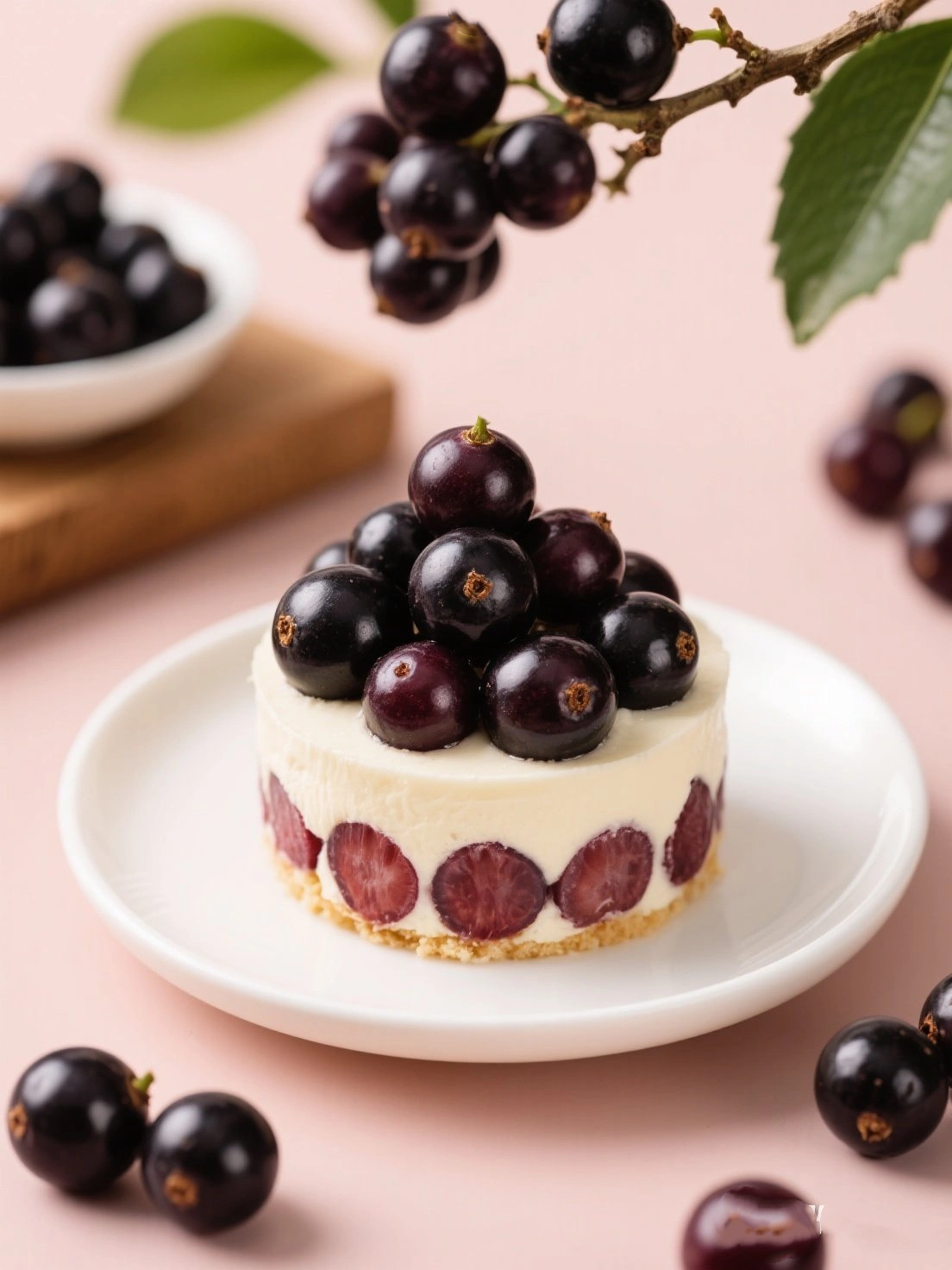Jabuticaba (Myrciaria cauliflora), also known as the Brazilian grape tree, is a unique tropical fruit native to Brazil, particularly the states of Minas Gerais, São Paulo, and Rio de Janeiro. The name comes from the Tupi words "jabuti" (tortoise) and "caba" (place), meaning "the place where tortoises eat."
This remarkable tree is famous for its cauliflory growth habit - the fruits grow directly on the trunk and main branches rather than from stems. The tree can produce fruit 5-6 times per year when conditions are ideal. There are several varieties including 'Sabará' (most popular), 'Paulista' (larger fruits), 'Branca' (white jabuticaba), and 'Roxa' (early fruiting).
Jabuticaba has been cultivated by indigenous peoples for centuries and became popular in Brazilian cuisine. The fruit is highly perishable, which limits its commercial distribution, making it primarily a backyard or local market fruit.
